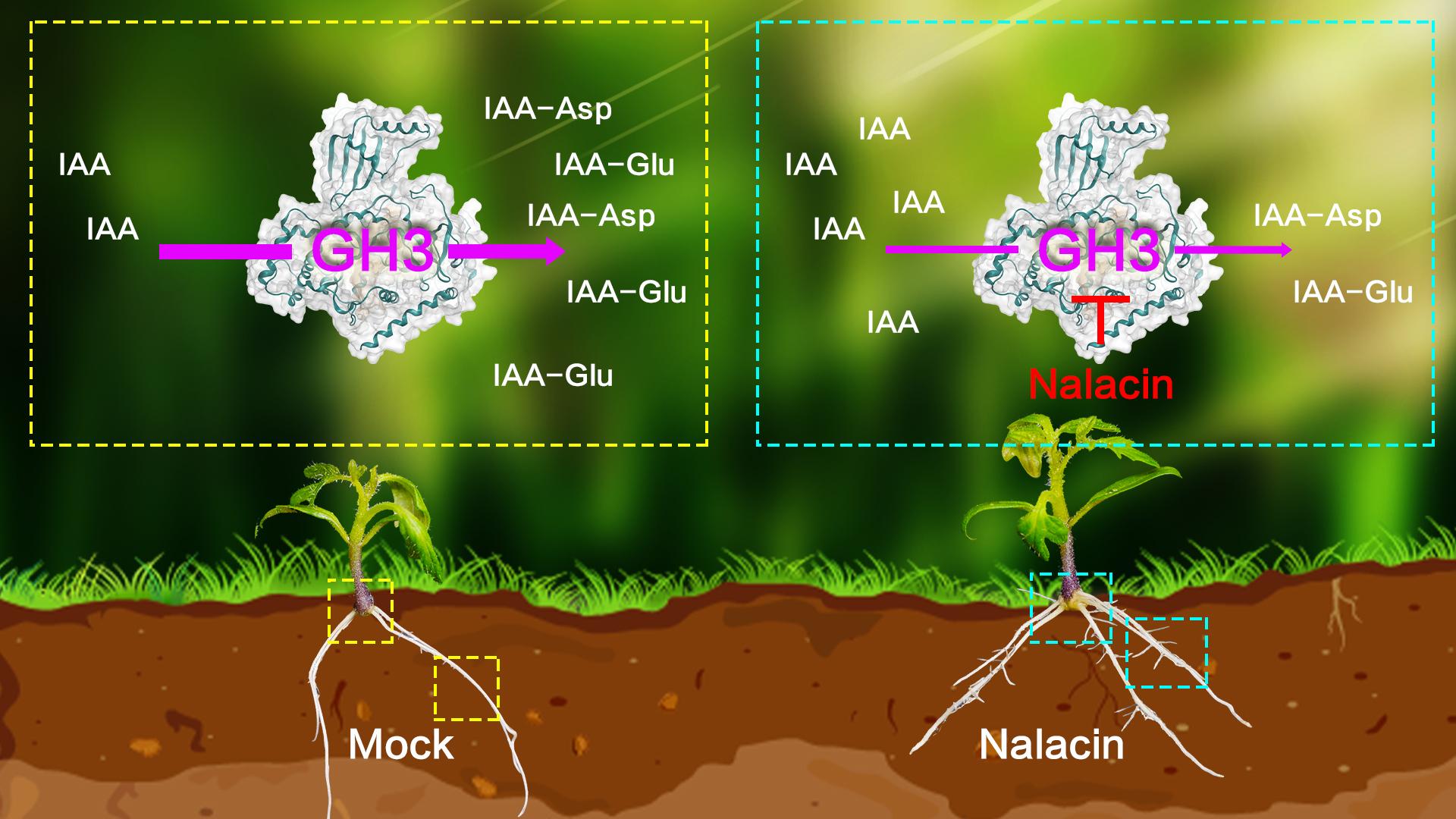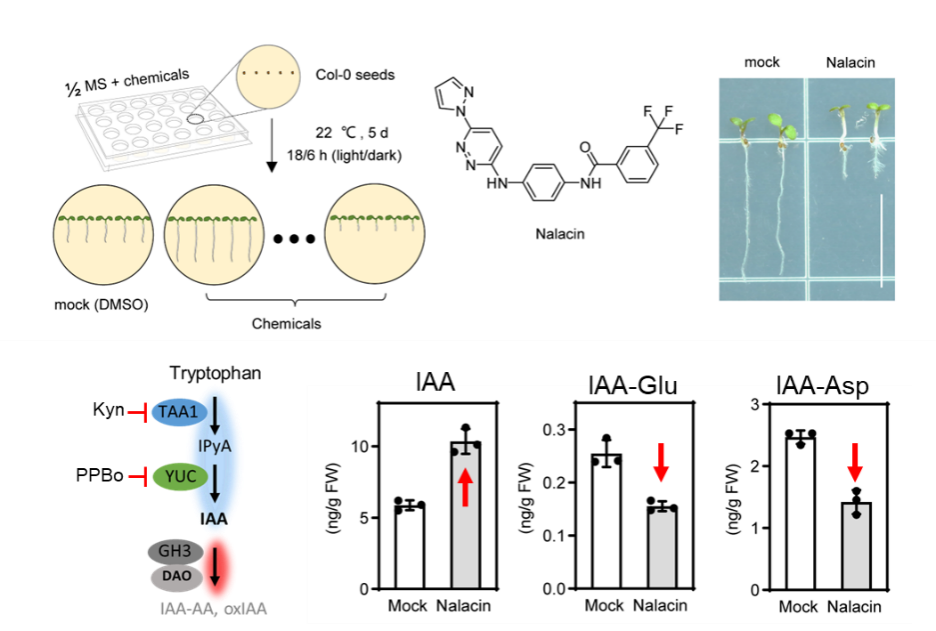Auxin, the first discovered plant hormone, is involved in regulating every aspect of plant growth and development, including cell division and elongation, organ morphogenesis, tropism in a plant, apical dominance, leaf abscission, and fruit development. Hence, the study of auxin is of great significance for understanding plant growth and development and guiding agricultural production.
Auxin exerts its biological activities in a spatiotemporal concentration-dependent manner, which is orchestrated by its biosynthesis, transport, and catabolism. To date, versatile chemical regulators have been developed to target auxin biosynthesis, transport, and signaling pathways.

Professor Hongwei Guo’s group, in collaboration with Associate Professor Hongda Huang’s group from the Department of Biology at the Southern University of Science and Technology (SUSTech), has recently published their research results where they identified a chemical non-auxin-scaffold-like auxin conjugation inhibitor (nalacin) to regulate endogenous IAA levels in planta via inhibiting GH3-mediated auxin conjugation. This research provides a new chemical tool for basic research and agricultural application.
Their research article, entitled “Chemical genetic screening identifies nalacin as an inhibitor of GH3 amido synthetase for auxin conjugation,” has been published in the prestigious scientific journal Proceedings of the National Academy of Sciences (PNAS).

Figure 1. A schematic graph of chemical screening and bioactivity assessment of nalacin
The researchers integrated genetics, chemical genetics, and biochemical approaches to demonstrate that nalacin is not an auxin mimic per se, but can directly bind to group II GH3s and inhibit their catalysis of auxin conjugation, leading to an increase of the bioactive auxin levels (Figure 1). To further illustrate the mode of actions of nalacin on GH3, they sequentially performed a structure-activity relationship study on nalacin, structural analysis of GH3 in complex with nalacin, and docking simulation.
The results showed that nalacin and its derivative D4 could respectively bind to the pocket of GH3.6 in complex with AMP and occupy the binding site of IAA. In addition, the residues that interact with nalacin and D4 are highly conserved in group II GH3s of Arabidopsis and that of vascular plant species, indicating broad applications of nalacin and D4 in versatile plant species. Notably, nalacin displayed better agronomic traits than exogenous IAA in tomato cutting propagation assay (Figure 2).

Figure 2. Crystal structure analysis and tomato cutting propagation assay
Dr. Yinpeng Xie, Dr. Ying Zhu, and Dr. Na Wang from the School of Life Sciences at SUSTech are the co-first authors of this paper. Research Assoc. Prof. Kai Jiang, Prof. Hongwei Guo, and Assoc. Prof. Hongda Huang are the co-corresponding authors.
Prof. Tadao Asami’s group at the University of Tokyo, Prof. Yunde Zhao’s group at the University of California San Diego, and Assoc. Prof. Ancheng C. Huang’s group at SUSTech also contributed to chemical synthesis, genetic materials, and mass spectrometry analysis, respectively.
The research was supported by the National Natural Science Foundation of China (NSFC), National Key Research and Development Program of China, Key Laboratory of Molecular Design for Plant Cell Factory of Guangdong Higher Education Institutes, Guangdong Innovative and Entrepreneurial Research Team Program, Shenzhen Science and Technology Program, and China Postdoctoral Science Fund Project.
It is worth noting that Prof. Hongwei Guo and Research Assoc. Prof. Kai Jiang have set up a chemical screening platform at SUSTech and made a series of achievements in chemical genetics studies, including auxin biosynthesis inhibitors L-kynurenine and ponalrestat, and the inhibitor of ACO for ethylene biosynthesis.
In addition, a new molecular mechanism of cytokinin regulates apical hook development via the coordinated actions of EIN3/EIL1 and PIF transcription factors in Arabidopsis was discovered by a chemical genetics approach. In this study, the development of nalacin provides a chemical tool that targets the auxin catabolism pathway, and enriches the chemical tools of auxin research and agriculture production.
Paper link: https://www.pnas.org/doi/10.1073/pnas.2209256119
To read all stories about SUSTech science, subscribe to the monthly SUSTech Newsletter.
Proofread ByAdrian Cremin, Yingying XIA
Photo By